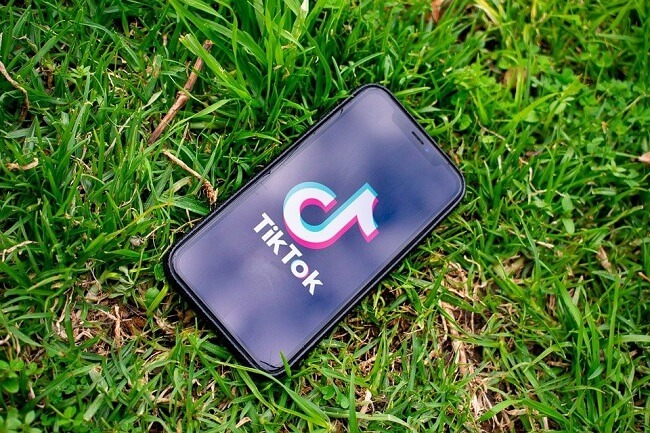Have you ever wanted your very own content feed, designed to include all of your favorite sources? All of those industry articles you’re always looking for can now be found within Google Discover.
Formerly known as Google Now, Google Discover carefully curates content based on your preferences, and the more you use it, the more accurate it will become. This means that you no longer need to page through irrelevant articles to find the correct one.
The purpose is to deliver meaningful content to the user throughout the day without additional input from your side. The idea is to help you “discover” new and exciting content that relates to your interest.
The importance of Google Discover for marketers
As we have already mentioned, Google Discover is a tool for users to discover new things. As a marketer, being one of these “new” things is one of the benefits of Google Discover.
Currently, not many marketers are making use of the Google Discover platform and we’re here to change that. The platform is open to any site, regardless of whether it is a publisher or not.
Research has found that sites including finance, e-commerce, healthcare, and even technology have managed to receive show up on google discover and receive traffic from it. So, how do they do it?
The most obvious point to start with is brushing up on your SEO content writing tips to ensure that customers that have expressed interest in the same, or even similar topics, will have the opportunity to discover your site and your content.
Now, to actually rank in Discover and answer the question “how to get traffic from google discover?” as well as “How do I train Google Discover?”, you need to deliver engaging content with a high-quality image and must have that specifies max image-preview:large or uses AMP.
Currently, there is no restriction to the content that can be displayed which makes it fair game. It also means that marketers have a lot of competition and need to be creative and strategic with their content.

Google Discover vs Google News
While the concept behind the two is simple, sharing information, the two platforms cater to different needs. To start with, Google News was launched in 2006 and acts as a hub for hundreds of thousands of news agencies.
The Google News homepage features local weather, headlines, and stories of the day as well as fact checks related to conspiracy theories.
Google Discover on the other hand was launched in 2018 and uses AI to give users access to information that they actually want to see. This is not limited to a certain content type and is tailored based on the user’s preferences. The idea is to give users access to relevant content without having to search for it.
Google Discover vs Google Search
As the name implies, Google Search gives you the ability to search for anything your heart desires and it will give you a list of related content. Google Discover on the other hand functions on content based on user interest.
Discover uses existing user data that includes Google Search history to find related information. So, if you were reading articles about knitting, Discover will populate your feed with knitting articles. In this way, Discover will learn about your interests and hobbies and curate your feed accordingly.

11 ways to improve visibility for Google Discover
Now that you understand what Discover is, you need to know how to increase your odds of appearing on the feeds of your target market. While there is no real formula, we have a few tips to help you get started.
1. Mobile is key: Your website needs to be mobile-friendly as the feed is currently only available for mobile. By having a fast, responsive site Discovery will rank your site higher.
2. Unique content: Attention-grabbing, unique content will pique the interest of the reader and drive them to your site to find out more. The file name needs to be descriptive and be compressed to a minimum of 1,200 pixels wide.
3. Copyright: Google will not feature websites that feature shred content. Your choice in text, audio, video, and images needs to be unique if you want to be featured.
4. Be consistent: Stay within your category when it comes to content and avoids switching topics. You need to build a positive reputation and establish yourself as a thought leader in your chosen field.
5. Follow trends: Popular topics and trends already have a great deal of interest, which means that people are already looking for it and will more than likely click on your site should it pop up.
6. Avoid ad spend: Google Discover thrives on organic content, which means that you will need to reduce your ad spend to try and get onto the feed.
7. Keep it interesting: Engaging, high-quality content will attract readers, especially if they find the topic interesting. Develop strong content with basic SEO principles in mind to increase your odds of featuring on the feed.
8. Speak to the pros: Digital agencies have experience in increasing your online presence and will have the knowledge and skills needed to get your brand on the Discover feed.
9. Consider the user experience: Your site needs to be responsive and easy to use. It also needs to be optimized to ensure that content loads instantly to prevent readers from losing interest.
10. Build relationships: You need to build trust with your audience and social proof is the best way to do so. Encourage follower engagement, promote shares, and get people talking about your brand.
11. Transparency: Be open to sharing information with your readers. This includes author information, bylines, publisher details, and company name, to name but a few.
It’s time to Discover your potential
In a world inundated with information, Google Discover makes it easier than ever before to discover relevant content. Better yet, you don’t even need to look for it, it’ll be right there waiting for you.
In the same breath, marketers need to develop unique, engaging content that will be attractive not only to Google Discover but to your audience as well. In doing so, you will increase your reach and improve your brand’s reputation.





Tell us your thoughts in the comments